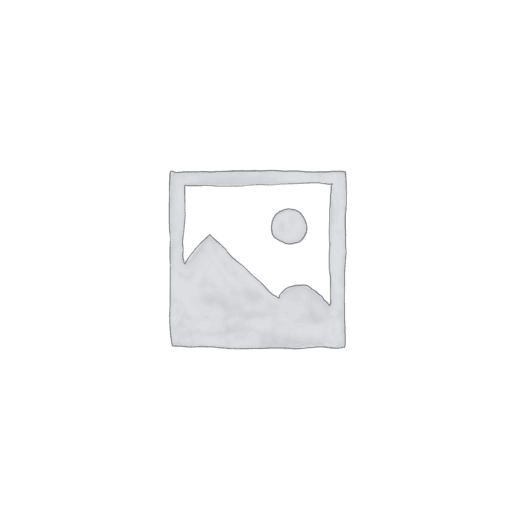Please, activate Compare option to use this widget.
Need help? Call us:
+91 7374000511
Shopping cart (0)
Subtotal: ₹0.00
Spend ₹3,050.00 to get free shipping
Congratulations! You've got free shipping.
Sale

Art Design Drawing | Vol 02 | Universal Graphics
Brand:
22 people are viewing this product right now
⏰ Hurry up !
0 Days
0 Hours
0 Minutes
0 Seconds
₹399.00 Original price was: ₹399.00.₹49.00Current price is: ₹49.00.
Shipping calculated at checkout.
🔥 Buy More Save More!
Buy 3 items get 5% OFF
on each productBuy 5 items get 10% OFF
on each productBuy 8 items get 20% OFF
on each productHave any Questions?
Feel free to Get in touch
Guarantee Safe and Secure Payment Checkout
Introduction to Art Design Drawing on an 18×24 Canvas
The 18×24 size canvas holds a unique place in the world of art design drawing. This versatile dimension has a rich history, having been favored by artists for centuries due to its balanced proportions and ample space for creative expression. Historically, it has been a popular choice among painters and illustrators who seek to create detailed and impactful works without the overwhelming vastness of larger canvases or the constraints of smaller ones.
One of the primary reasons for the enduring popularity of the 18×24 canvas is its adaptability. This size is large enough to allow for intricate detailing and expansive compositions, yet it remains manageable for artists of all skill levels. Whether you are a novice exploring the basics of art design or a seasoned artist refining your technique, the 18×24 canvas offers a perfect middle ground. It provides sufficient space to experiment with different styles and methods, making it ideal for a wide range of projects, from portraits and landscapes to abstract art and mixed media.
The 18×24 canvas is particularly well-suited for educational settings and workshops. Its manageable size makes it an excellent choice for classroom projects and art courses, where ease of handling and display are crucial. Students can comfortably work on their pieces without feeling daunted by a larger canvas, while still having enough space to showcase their creativity and detail. For professional artists, this canvas size is a staple in their studios, often used for commissioned works, gallery pieces, and personal projects.
In addition to its practical advantages, the 18×24 canvas also offers a visually appealing aspect ratio that enhances the overall composition of the artwork. The dimensions strike a harmonious balance, making the final piece aesthetically pleasing and proportionate. This attribute is particularly beneficial for artists focusing on achieving a cohesive and visually compelling design.
Materials and Tools Needed for 18×24 Drawings
Creating art on an 18×24 canvas requires a selection of essential materials and tools to ensure the best results. The first step in this process involves selecting the right type of canvas or drawing paper. For canvases, options include pre-stretched and primed canvases, canvas panels, and canvas pads, each offering unique textures and absorption properties. High-quality art design drawing papers such as Bristol board or heavyweight sketch paper are also suitable for detailed drawings.
When it comes to drawing instruments, pencils and charcoal are fundamental. Graphite pencils come in a range of hardness levels from 9H (hard) to 9B (soft), allowing for varied shading and detailing. Charcoal sticks and pencils provide rich, dark lines and are ideal for expressive work. Additionally, colored pencils and pastels can be used to add vibrant hues to your drawings.
Erasers are indispensable tools in the artist’s arsenal. Kneaded erasers are versatile, allowing for precise corrections and lifting graphite or charcoal without damaging the paper. Vinyl erasers are effective for removing larger areas of unwanted marks. For fine details, consider using precision erasers or eraser pencils.
Other essential tools include blending stumps or tortillons for smooth shading transitions, fixative sprays to protect finished works, and a variety of sharpeners to maintain the condition of your pencils. A sturdy easel provides support for your 18×24 canvas, enabling a comfortable working angle.
Preparing your canvas involves ensuring it is properly primed if using raw canvas, which helps prevent the drawing medium from bleeding through. Setting up an efficient workspace is equally crucial; a well-lit area with ample space for organizing tools and materials enhances productivity and creativity.
By investing in high-quality materials and setting up an organized workspace, artists can fully leverage the expansive surface of an 18×24 canvas, mastering the art design process with ease and precision.
Techniques and Tips for Drawing on an 18×24 Canvas
Art Design Drawing on an 18×24 canvas presents unique opportunities and challenges that require strategic planning and refined techniques. One of the first steps is composition planning. Given the larger size, it’s essential to sketch a rough layout to ensure that all elements are proportionate and well-positioned. Using a grid system can help in maintaining accurate proportions, especially when scaling up from smaller reference images.
Understanding proportions is critical in achieving a balanced and cohesive drawing. This involves not only the size relationships between different elements but also the spatial relationships that create a sense of depth. Employing techniques such as the rule of thirds can guide you in placing focal points effectively, thereby enhancing the visual appeal of your artwork.
Layering is another vital technique, particularly in creating depth and texture. Start with light, loose sketches to map out the basic forms. Gradually build up layers, refining details and enhancing contrasts. This method allows for adjustments and corrections, ensuring that the final composition is polished and precise.
Shading plays a crucial role in bringing your drawing to life. Employ a range of shading techniques, such as hatching, cross-hatching, and stippling, to create varying textures and tones. Pay attention to the light source, as it dictates where shadows and highlights should be placed, adding dimensionality to your artwork.
For those exploring different styles, the approach may vary. Realistic drawing demands meticulous attention to detail and accurate rendering of textures and light. Abstract art, on the other hand, offers more freedom with forms and colors, allowing for a more expressive and interpretive approach. Mixed media can combine elements of both, incorporating diverse materials and techniques to create a multifaceted piece.
Professional artists often emphasize the importance of continuous practice and experimentation. Refine your skills by tackling various subjects and styles. Overcoming common challenges, such as maintaining proportions or achieving consistent shading, requires patience and persistence. Seek feedback from peers and mentors to gain new perspectives and improve your techniques.
Showcasing and Preserving Your 18×24 Artworks
Mastering the art of drawing on an 18×24 canvas is a remarkable achievement, but ensuring your artwork is showcased and preserved effectively is equally important. Proper framing is the first step in preserving your 18×24 masterpieces. Opt for high-quality, acid-free mats and UV-protective glass to guard against discoloration and environmental damage. Custom frames tailored to the size and style of your artwork can enhance its visual appeal, turning your drawing into a professional display piece.
Effective display techniques can significantly impact how your 18×24 art is perceived. Consider the lighting in your display area; indirect lighting minimizes glare and prevents fading. Hanging your artwork at eye level ensures it captivates viewers and garners the attention it deserves. For those seeking a modern touch, floating frames or frameless mounts can offer a contemporary look, allowing the artwork to speak for itself.
Beyond framing and display, protecting your art from environmental factors is crucial. Humidity, temperature fluctuations, and direct sunlight can damage your artwork over time. Use climate-controlled environments for both display and storage. If storing your 18×24 pieces, keep them in a dry, cool area, ideally in a portfolio case or flat storage unit designed for artwork. Acid-free backing boards and protective sleeves are additional measures to safeguard your creations.
Photographing your 18×24 drawings for online sharing or portfolio inclusion requires attention to detail. Utilize natural light to capture the true colors of your artwork, and ensure the camera is parallel to the canvas to avoid distortion. High-resolution images are essential for showcasing the intricacies of your work, whether you are sharing on social media, your personal website, or a professional portfolio.
Proper handling of your art is essential to maintain its condition. Always handle your 18×24 pieces with clean, dry hands or wear cotton gloves to avoid transferring oils and dirt onto the canvas. By combining these best practices for framing, displaying, protecting, and sharing, you can ensure your 18×24 artworks remain in excellent condition and reach a wider audience, allowing your artistic talents to shine through.
PRODUCT DETAILS:
- Templates Type: 18×24 JPG Background
- Resolution: 4k High Quality
- File Format: JPG
- Use In: Background (Copyright Free)
WHAT YOU’LL GET:
- 50+ JPG
- 1 ZIP FILE
- 516 MB FILE SIZE
- 18×24 JPG 300 PIX
Be the first to review “Art Design Drawing | Vol 02 | Universal Graphics” Cancel reply
Related products
Sale!
Pre Wedding Instagram Post Design | Vol 01 | Universal Graphics
🔥 12 items sold in last 3 hours
Rated 5.00 out of 5
Sale!
Maternity Background HD Download | Universal Graphics
🔥 8 items sold in last 3 hours
Rated 5.00 out of 5
Sale!
Pre Wedding Instagram Post Design | Vol 02 | Universal Graphics
🔥 5 items sold in last 3 hours
Rated 5.00 out of 5
Sale!
Pre Wedding Instagram Post Design | Vol 05 | Universal Graphics
🔥 10 items sold in last 3 hours
Rated 5.00 out of 5
Sale!
4K Wallpapers for PC | Vol 01 | Universal Graphics
🔥 10 items sold in last 3 hours














Reviews
There are no reviews yet.